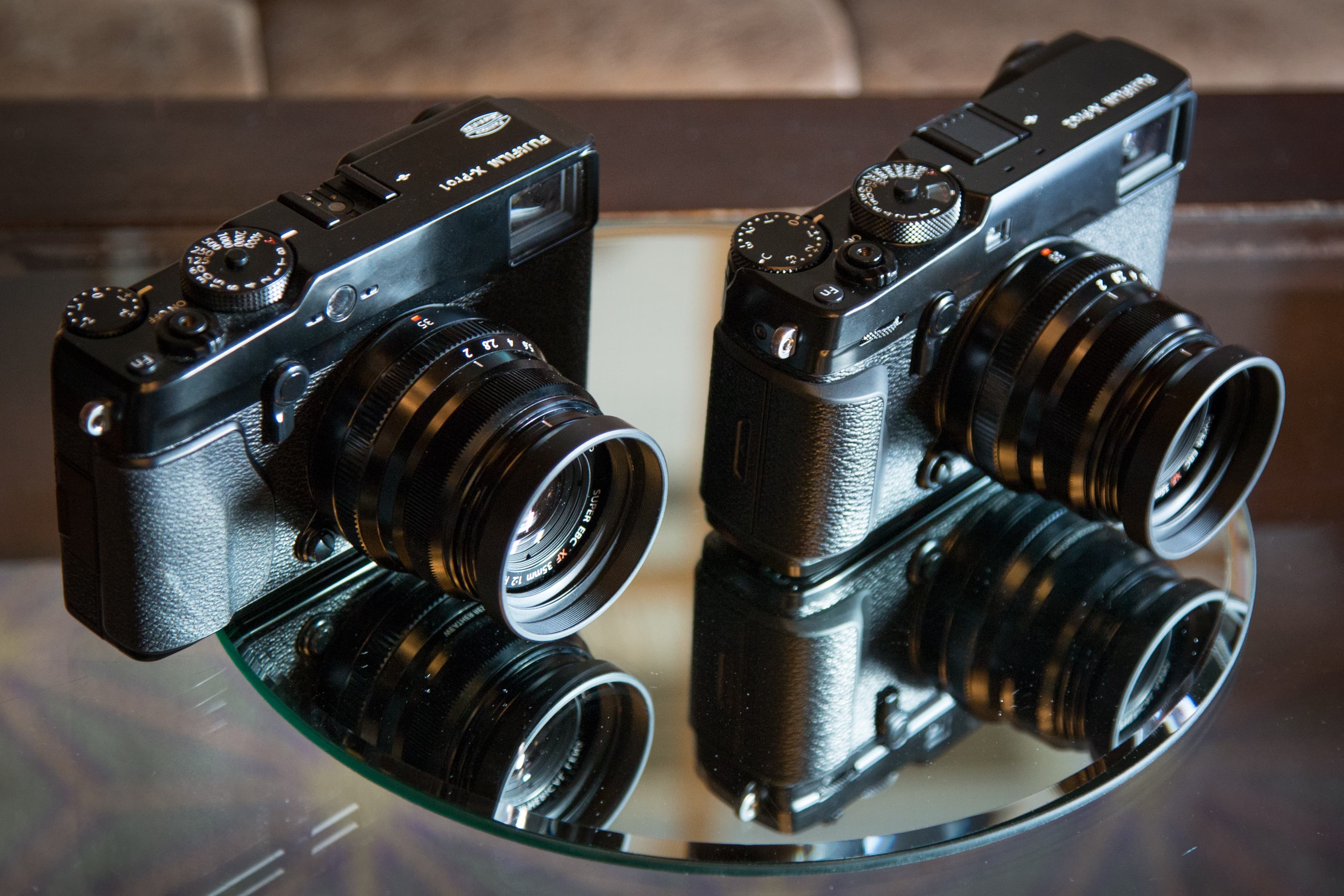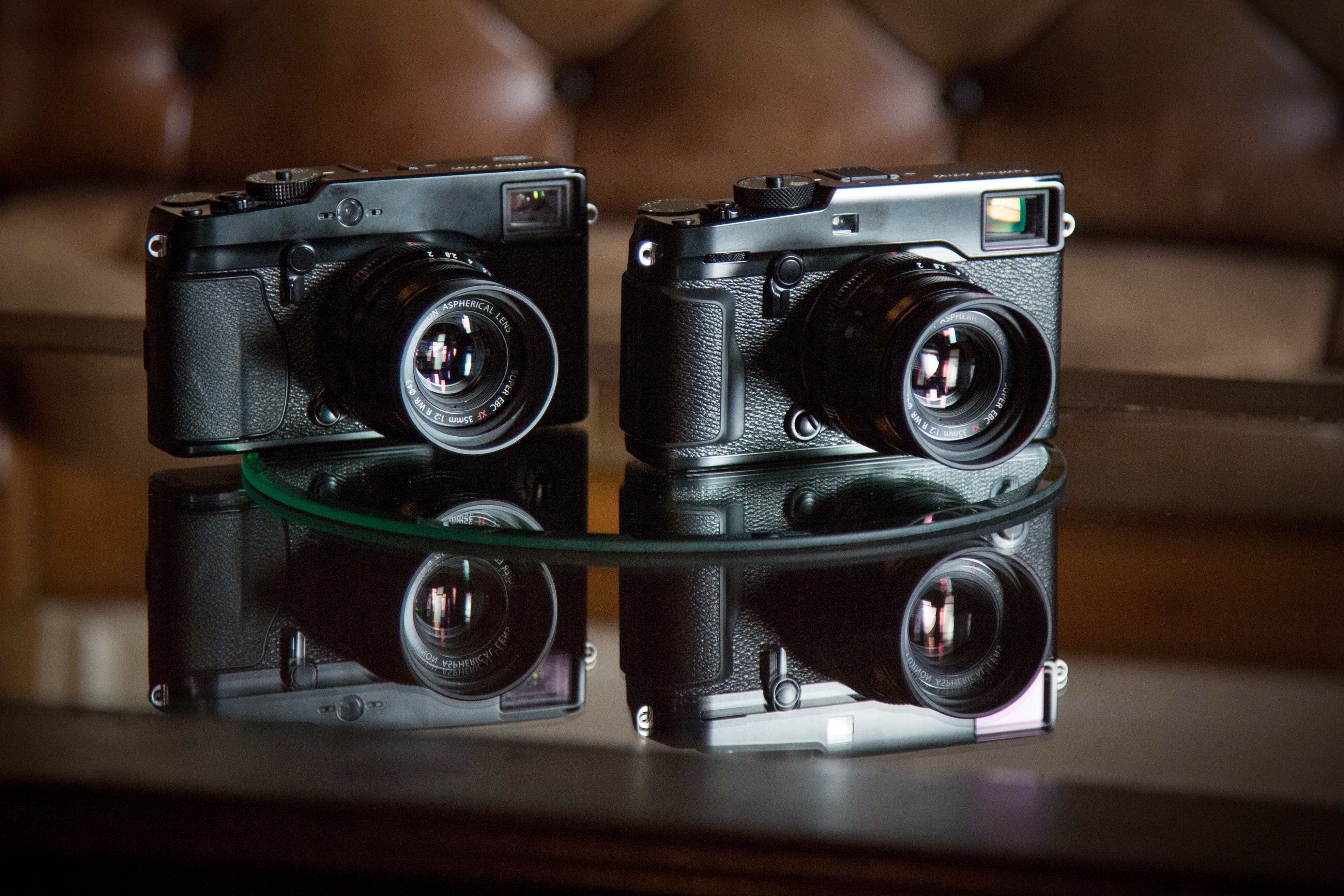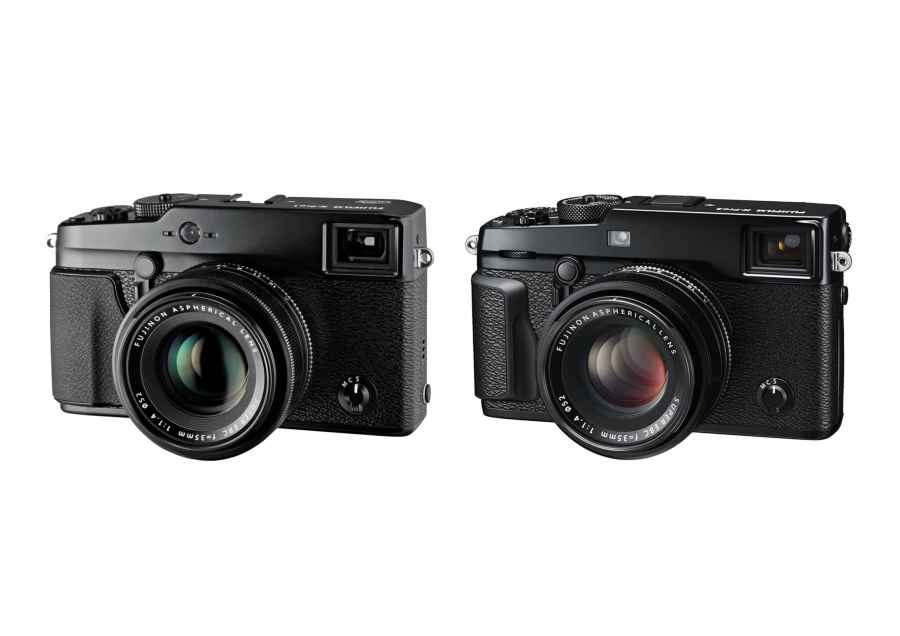1. Fuji X-Pro 2 vs Fuji X-Pro 1 – Sensor
The X-Pro 1 used a 16.3MP APS-C X-Trans CMOS sensor, variations of which were used in subsequent models. Now, the company has moved on to a third generation X-Trans CMOS III sensor, with a significantly higher 24.3MP across the same APS-C area.
2. Fuji X-Pro 2 vs Fuji X-Pro 1 – LCD screen
The LCD screen has maintained its 3in dimensions on the new model, and it’s still fixed to the camera rather than being adjustable in any way, although its resolution has jumped from 1.23million dots to 1.62million dots. It isn’t touch sensitive, however, which means that all operation happens through the physical controls.
3. Fuji X-Pro 2 vs Fuji X-Pro 1 – Processor
Whereas the X-Pro 1 used an EXR Processor Pro, the new model has been equipped with an updated X-Processor Pro. This is the first time the company has used this processor, and it’s said to offer faster processing, lower noise and better tonal and colour reproduction than the previous EXR II processor (itself an improvement on the X-Pro 1’s EXR Processor).
4. Fuji X-Pro 2 vs Fuji X-Pro 1 – Sensitivity
The X-Pro 1’s ISO 200-6400 standard sensitivity range has been expanded to ISO 200-12,800 for the X-Pro 2, with extensions settings equivalent to ISO 100 and up to 51,200 on hand.
5. Fuji X-Pro 2 vs Fuji X-Pro 1 – Viewfinder
Previously a Hybrid Multi Viewfinder on the X-Pro 1 and now an Advanced Hybrid Multi Viewfinder, the size of the optical and electronic viewfinders in both models is roughly the same, although resolution of the X-Pro 2’s EVF is now at 2.36million dots, which is significantly higher than the 1.44million dots on the X-Pro 1. The EVF’s display rate of 54fps on the X-Pro 1’s is now up to 85fps when the X-Pro 2 is set to the High Performance mode, while the previously seen Electronic Rangefinder, a feature that was only introduced after the X-Pro 1, has also been thrown in here. The eyepoint has also been made slightly longer, from 14mm to 16mm, which is said to make the viewfinder easier to view.

6. Fuji X-Pro 2 vs Fuji X-Pro 1 – Dioptric correction
Dioptric correction wasn’t possible on the X-Pro 1 as standard – for that you needed to buy separate lenses. Thankfully, Fuji has incorporated this into the X-Pro 2’s viewfinder.
7. Fuji X-Pro 2 vs Fuji X-Pro 1 – Weather sealing
The X-Pro 1 didn’t offer weather sealing of any kind – that only came much later with the X-T1 – but the X-Pro 2 has been sealed against the elements. Thanks to 61 seals around the body, Fuji claims the camera is splash- and dust-proof, and can be used in temperatures as cold as -10oC (10oC cooler than the X-Pro 1).

8. Fuji X-Pro 2 vs Fuji X-Pro 1 – AF system
Fuji has made a number of changes here, such as by increasing the AF points from 49 points to 77 as standard and tweaking the predictable AF algorithm for better tracking of moving subjects, in addition to promising faster overall AF performance.
9. Fuji X-Pro 2 vs Fuji X-Pro 1 – Film Simulations Modes
While the X-Pro 1 offered 10 Film Simulation options, the X-Pro 2 comes with 15 as standard. These include the Classic Chrome mode first seen on the X30 and X100T cameras, as well as a new black-and-white Acros option.
10. Fuji X-Pro 2 vs Fuji X-Pro 1 – Grain Effect mode
An option not present on any previous model, this adds graininess to images to make them appear more like images captured on film.
11. Fuji X-Pro 2 vs Fuji X-Pro 1 – Joystick
The back of the camera welcomes a new joystick-style lever, which can be used to change the focusing point and for general menu operation.
12. Fuji X-Pro 2 vs Fuji X-Pro 1 – Exposure compensation options
The exposure compensation dial on the X-Pro 1 allowed for adjustment over a -/+2EV range, and this has now been broadened to -/+3EV on the X-Pro 2. Additionally, a new ‘C’ setting on the dial allows the user to continue adjusting exposure compensation up to a maximum -/+5EV through the front command dial.
13. Fuji X-Pro 2 vs Fuji X-Pro 1 – Menu system
Fuji has refreshed the menu system on the X-Pro 2, with changes to the font and layout for both cosmetic and practical reasons. Furthermore, the addition of a My Menu option allows the user to assign 16 settings of their choice for quick access.
14. Fuji X-Pro 2 vs Fuji X-Pro 1 – Burst rate
The X-Pro 1 offered maximum burst rate of 6fps, and this has now risen to 8fps on the new model.
15. Fuji X-Pro 2 vs Fuji X-Pro 1 – Design
Among other minor changes, Fuji has redesigned the grip and rear thumb rest for the new model, and also lost the buttons that were on the left hand side of the rear LCD.

16. Fuji X-Pro 2 vs Fuji X-Pro 1 – Front command dial
The X-Pro 1 only sported one command dial, which was positioned on the back of the camera, although the X-Pro 2 has an additional dial around the front.
17. Fuji X-Pro 2 vs Fuji X-Pro 1 – Shutter
A new focal-plane shutter now allows for a maximum shutter speed of 1/8000sec (compared with the X-Pro 1’s 1/4000sec limit). Maximum flash sync speed has also risen from the X-Pro 1’s 1/180sec speed up to 1/250sec.
18. Fuji X-Pro 2 vs Fuji X-Pro 1 – Video
Although full HD video was possible on the X-Pro 1, the choice of frame rates has now been expanded to 60/50p, 30/25p and 24p options.
19. Fuji X-Pro 2 vs Fuji X-Pro 1 – Wi-Fi
The X-Pro 1 didn’t offer wireless control of any kind but the X-Pro 2 is one of a number of recent models to have Wi-Fi built into it.
20. Fuji X-Pro 2 vs Fuji X-Pro 1 – Memory cards slot
Although the X-Pro 2 follows its predecessor in recording images and videos onto SD-format cards, it’s the first camera in the X-series line to sport a dual card slot. This accepts SD, SDHC and SDXC cards and supports both UHS I and II, although the latter only in one slot.
21. Fuji X-Pro 2 vs Fuji X-Pro 1 – Size
The new model is only slightly larger than the X-Pro 1, with measurements of 140.5 x 82.8 × 45.9mm against the X-Pro 1’s 139.5 x 81.8 x 42.5mm.

22. Fuji X-Pro 2 vs Fuji X-Pro 1 – Weight
Fuji states that the X-Pro 2 weighs approximately 445g without its battery and memory card, which is 45g heaver than the X-Pro 1.







